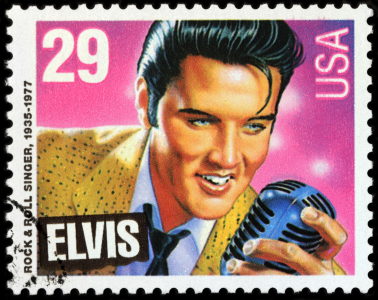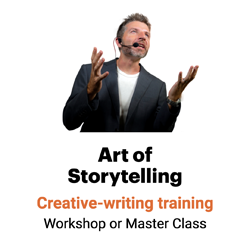Metaphor is like Elvis; it shakes us up
Why metaphor?

Metaphor is a literary device that helps readers understand, pay attention, remember and act on messages. Metaphor is a figure of speech in which a word or phrase is applied to an object or action to which it is not literally applicable: Lips are volcanoes, for instance.
What is the purpose of a metaphor? Use metaphor, says James Geary, author of The Secret Life of Metaphor, because:
1. Metaphor is around us daily.
“Metaphor lives a secret life all around us,” he says. “We utter about six metaphors a minute. Metaphorical thinking is essential to how we understand ourselves and others, how we communicate, learn, discover and invent. But metaphor is a way of thought before it is a way with words.”
2. Metaphor makes messages vivid.
William Shakespeare used metaphor. So did Elvis Presley.
“Now, ‘All Shook Up’ is a great love song,” Geary says. “It’s also a great example of how whenever we deal with anything abstract — ideas, emotions, feelings, concepts, thoughts — we inevitably resort to metaphor.
“In ‘All Shook Up,’ a touch is not a touch, but a chill. Lips are not lips, but volcanoes. She is not she, but a buttercup. And love is not love, but being all shook up.”
3. Metaphor creates expectations.
“Pay careful attention the next time you read the financial news,” Geary says. “Agent metaphors describe price movements as the deliberate action of a living thing, as in, ‘The NASDAQ climbed higher.’ Object metaphors describe price movements as non-living things, as in, ‘The Dow fell like a brick.’
“Researchers asked a group of people to read a clutch of market commentaries, and then predict the next day’s price trend. Those exposed to agent metaphors had higher expectations that price trends would continue. And they had those expectations because agent metaphors imply the deliberate action of a living thing pursuing a goal.”
Would agent or object metaphors best help you set the right expectations?
4. Metaphor influences decisions.
“A group of students was told that a small democratic country had been invaded and had asked the U.S. for help,” Geary says. “And they had to make a decision. What should they do? Intervene, appeal to the U.N., or do nothing?
“They were each then given one of three descriptions of this hypothetical crisis. Each of which was designed to trigger a different historical analogy: World War II, Vietnam, and the third was historically neutral.
“Those exposed to the World War II scenario made more interventionist recommendations than the others. Just as we cannot ignore the literal meaning of words, we cannot ignore the analogies that are triggered by metaphor.”
5. Metaphor opens the door to discovery.
“Einstein described his scientific method as ‘combinatory play,’” Geary says. “He famously used thought experiments, which are essentially elaborate analogies, to come up with some of his greatest discoveries. By bringing together what we know and what we don’t know through analogy, metaphorical thinking strikes the spark that ignites discovery.”
6. Metaphor shakes things up.
“Metaphor shakes things up, giving us everything from Shakespeare to scientific discovery in the process,” Geary says. “The mind is a plastic snow dome, the most beautiful, most interesting, and most itself, when, as Elvis put it, it’s all shook up. And metaphor keeps the mind shaking, rattling and rolling, long after Elvis has left the building.”
___
Source: James Geary, “Metaphorically Speaking,” TedTalks, July 2009

Leave a Reply